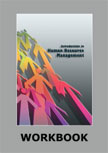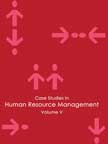Human Resource Management System Reforms at Matsushita
|
|
ICMR HOME | Case Studies Collection
Case Details:
Case Code : HROB028
Case Length : 15 Pages
Period : 2001
Pub Date : 2003
Teaching Note :Not Available
Organization : Varied
Industry : Consumer Electronics
Countries : Japan
To download Human Resource Management System Reforms at Matsushita case study
(Case Code: HROB028) click on the button below, and select the case from the list of available cases:

Price:
For delivery in electronic format: Rs. 400;
For delivery through courier (within India): Rs. 400 + Shipping & Handling Charges extra
» Human Resource and Organization Behavior Case Studies
» HRM Short Case Studies
» View Detailed Pricing Info
» How To Order This Case
» Business Case Studies
» Area Specific Case Studies
» Industry Wise Case Studies
» Company Wise Case Studies

Please note:
This case study was compiled from published sources, and is intended to be used as a basis for class discussion. It is not intended to illustrate either effective or ineffective handling of a management situation. Nor is it a primary information source.
Chat with us

Please leave your feedback

|
|




<< Previous
Excerpts
'Lifetime' Employment at Matsushita
|
Matsushita was founded by Konosuke Matsushita (Konosuke) in 1918, as Matsushita
Electric Housewares Manufacturing Works in Japan. From the beginning, Konosuke's
belief about employees was different from other employers.
Generally, employers
considered it risky to share technical know-how with their employees as there
was a possibility of them passing on the information to their competitors.
However, Konosuke trusted his employees a lot. He believed that knowledgeable
employees would perform better and therefore believed in sharing all information
with them. After the Second World War, Matsushita expanded rapidly into
different product segments, namely, consumer electronics products, industrial
electronics products and components...
|

|
Human Resource Management System Reforms
In the late 1990s, Matsushita was forced to restructure its liberal human
resource policies due to Japan's worst ever economic recession in the 1990s
and the Asian currency crisis of 1998.
|
|
In 1998, the company introduced the Retirement
Allowance Advanced Payment System under which the new recruits were
given pay packages based on their preference. The new system was
introduced because the attitude of young workers in Japan was
changing and they preferred to change jobs for better opportunities.
The new system offered two options – Plan A and Plan B. Under Plan
A, recruits received significantly higher salaries (more than
¥100,000 per annum than Plan B). However, these recruits had to
forgo other benefits like stock sharing, housing loans, company
accommodation etc. and did not get any amount on retirement or
resignation. |
Under Plan B, the recruits got lower salaries than in Plan A,
but got additional benefits like company accommodation, stock options, free
tickets to social events and more. In both the plans, employees had to forgo the
retirement allowance
(Refer Table I)...
Excerpts Contd...>>
|
|










